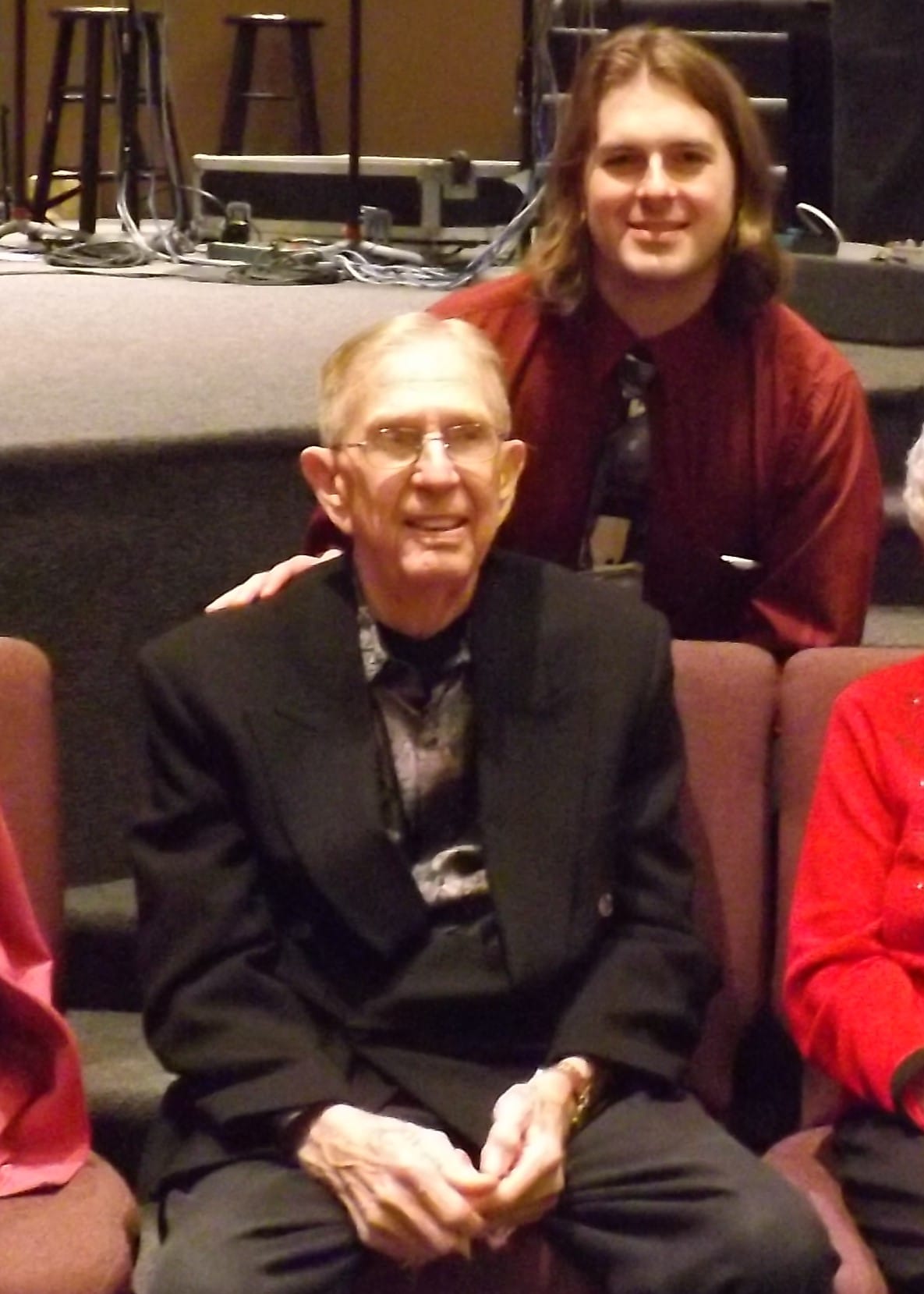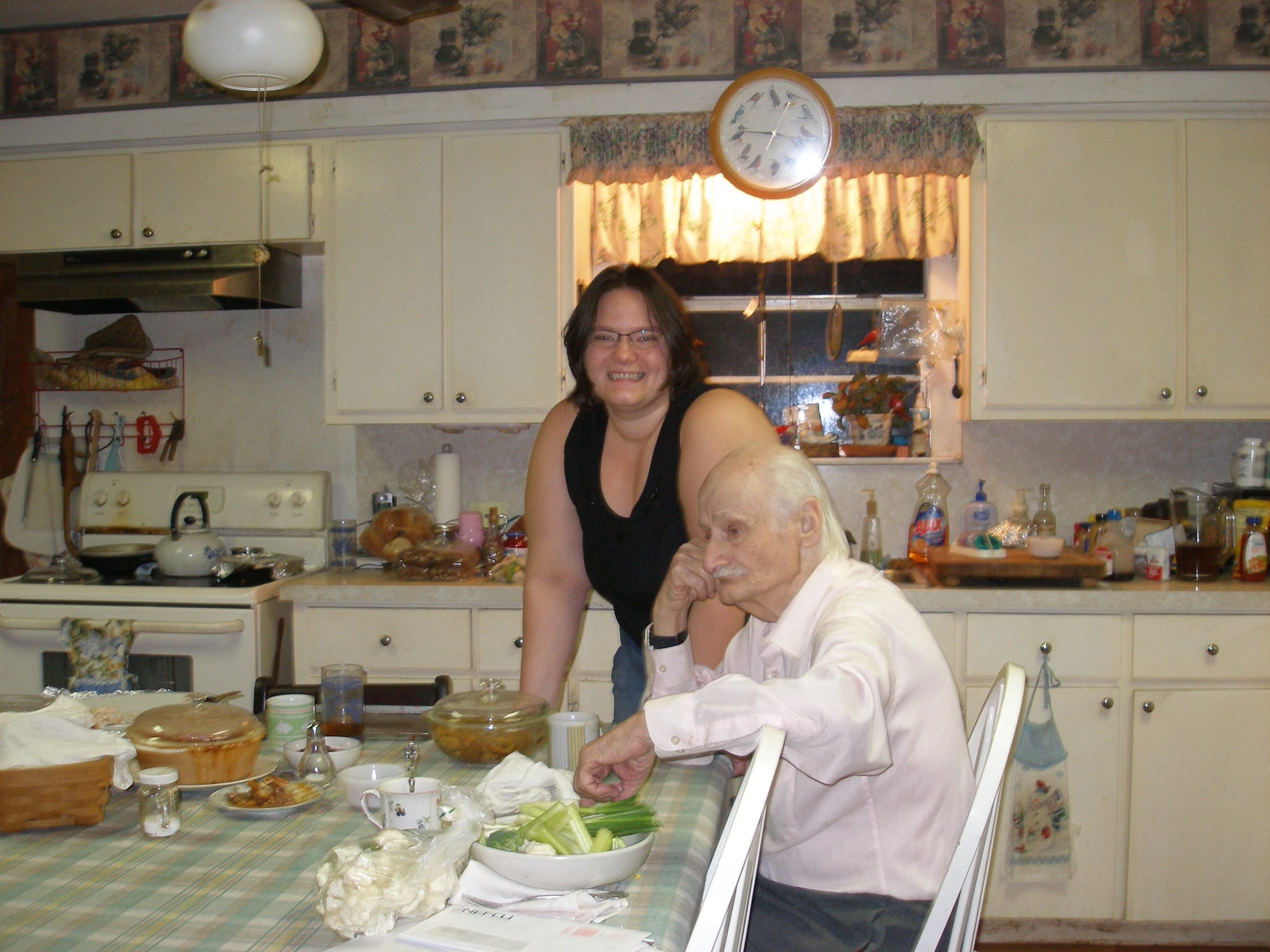Citing Funding Risks, Clinics Cancel Gender-Affirming Treatment for Adults
One adult patient of Planned Parenthood Arizona was told by phone Friday night that the treatment she receives for gender-affirming care was "paused."
Research shows that caregiving often results in isolation and burnout, and it's hitting queer people hardest.

On their way to rock bottom, Gigue Jeffrey “G.J.” Hodson imagined driving to the local supermarket to purchase a bottle of booze. Which type, exactly, wasn’t clear—but anything would do.
A child of alcoholics, Hodson, who uses they and them pronouns, barely had so much as a sip of alcohol in 35 years. Still, after another long day of caring for their adopted grandfather, a stiff drink–or maybe even the whole bottle—suddenly seemed appealing.
“I just wanted something that would shut off the feelings of being so exhausted and burned out,” Hodson said. Overwhelmed at the prospect of leaving the house, however, Hodson decided to remain sober.
That was almost a decade ago, but the memory of just how difficult caregiving can be remains fresh in their mind.
Hodson is one of the roughly 38 million family caregivers in the United States, according to a report published by AARP. The national elder queer organization SAGE found that there is a growing percentage of unpaid caregivers who identify as LGBTQ+ and face a myriad of unique challenges that can lead to burnout.
LGBTQ+ people provide informal, unpaid care at slightly higher rates than the general population. 1 in 5 LGBT people provide care for another adult, compared to 1 in 6 non-LGBT people, according to the SAGE report.
“We're by far the most likely to care for someone who isn't a relative or partner,” said Hodson, chalking up the discrepancy to LGBTQ+ people caring for their “chosen family.”
“We care for friends, we care for neighbors, we care for exes," they said.
It’s a phenomenon familiar to George Burson, who works with caregivers at the Phoenix non-profit Duet Aging. He said he often sees queer people in his caregiving support groups.
“Heterosexual children are generally married and have kids of their own, whereas the LGBTQ child is not in a relationship, or if they’re in a relationship, they don’t have kids and all the additional things that go on in the heterosexual home,” said Burson, who spent his youth as a gay-rights activist in New Jersey. “Very often, the LGBTQ child is the one that winds up stepping in.”
Family caregivers spend a total of 36 billion hours caring for their loved ones a year, according to an analysis by AARP which looked at 38 million workers. They said the experience can be stressful, physically and emotionally demanding, and unpredictable.
The tasks associated with caregiving vary widely, depending on the care recipient’s needs. Some caregivers spend their time completing complex tasks like managing their loved one’s finances and scheduling doctor’s appointments. Others focus on high-touch tasks such as dressing and bathing their loved ones. Many caregivers have no choice but to do it all.
Hodson’s journey began when their grandfather contracted aspiration pneumonia, a common sign of dementia.

“He spent nearly a week in the hospital. And I was like, okay, I’m a caregiver now,” said Hodson.
Little did they know that the experience of caregiving would push them nearly to their breaking point and change the course of their life: “I took care of him for four years at home, and then I oversaw his stay in memory care for another 15 months, and I was pretty much alone through all of that," they said.
As months turned into years and Hodson continued caring for their grandfather, they noticed their social network dwindling. “I had friends and lovers in other states, and I would offer to fly them out,” said Hodson, reciting their invitation. “I will pay for your travel. Just come see me.”
It was no use.
“I couldn't get them to do it,” said Hodson. “And that, over time, it really wore me down.”
Despite the immense toll that frequent isolation and constant vigilance can have on the human psyche, caregiving can also be a profoundly meaningful experience, said Sarah Beth Landau, who left her job as an executive assistant to care for her maternal grandmother and father. They were both close in age and had dementia.
Although she found the experience incredibly difficult, Landau thinks back fondly on the rare moments her grandmother would, out of the blue, become more lucid and act like her old self. It’s the simple times that stick with Landau, long after her grandmother and father have died– the sound of laughter over the dinner table and memories of going shopping together.
“I have memories of that time that I cherish,” said Landau, “but overall, it was a pretty dark time for me.”

Landau, who is bisexual and cisgender, learned about the value of caregiving through the Dallas leather scene which provided her a taste of freedom from caregiving.
“I found a lot of solidarity for my decision to be a caregiver because the collective cultural memory of caregiving through the AIDS crisis was very strong,” said Landau of the Dallas leather scene. “They understood why I chose to be a caregiver and valued that.”
Despite working around the clock to care for their loved ones, neither Hodson nor Landau received compensation besides free room and board. The majority of caregivers in the United States must also work outside the home and spend around one-quarter of their income to support their loved ones, according to the AARP, often buying groceries or paying medical bills for the care recipient.
Burson, from Duet Aging, advises everyone to start planning (and saving) for their end-of-life needs early.
“People don't plan ahead,” said Burson, who cared for his own parents before they died. “And in the LGBTQ community, there's a lot of emphasis on youth, and so people are kind of in denial about getting older or the needs they might have.”
As a result, burnout amongst caregivers is a common occurrence, which can lead to adverse health problems.
The American Medical Association defines caregiver burnout as a “state of physical, emotional or mental exhaustion that can create negative and unconcerned caregiver attitudes.”
It manifests as depression or anxiety, with symptoms such as exhaustion, withdrawal from friends, family, loss of interest in activities previously enjoyed, feeling hopeless and helpless, changes in appetite and sleep patterns, difficulty concentrating, and increased irritability.
According to a survey conducted by the AMA, almost 25 percent of caregivers who provide care for more than 40 hours per week said their health deteriorated as a result. More than half of surveyed caregivers said that their health decline affected their ability to provide care.
“Very often the caregiver dies before the person they're caring for because of all the stress and everything that's involved in it,” said Burson, who knows of caregivers who have suffered strokes and heart attacks. “And when you're caring for somebody, you're focusing on their medications, on their doctor's appointments, on where you have to take them, what you have to do with them, that by the time it comes time for you, a lot of caregivers don't wind up making their annual physical checkup and they're letting themselves go.”
For Hodson, the stress of caring for his grandfather led to considering self-harm.
“I did briefly have the strongest suicidal ideations that I've ever had in my life,” said Hodson. “I said I'm going to honor him, I'm going to take care of him no matter what it takes, but when he's gone, I can just end it, and I won't have to worry about this anymore. And that would bring me a strange comfort. This was peak burnout.”
Joining a support group for caretakers, reaching out to the local area agency on aging to find resources, and asking friends and family to help share the burden by dropping by with a casserole or running some errands can help caregivers find the strength to continue.
Making time for joyful experiences is also key to staving off caregiver burnout, according to Burson, who took up painting when he cared for his mother. Finding self-care activities that relieve stress and take the focus off caregiving as soon is key.
“The first year that my grandfather got sick, I started getting monthly massages,” said Hodson. “The second year I started going to support groups. The third year I started going to therapy, and in the fourth year, I located a facility that would take him in once it was unsafe for him to be at home anymore.”
“Those were kind of my big four steps,” he said. “But any one of those, I probably should have started six months or a year earlier.”
LOOKOUT Publications (EIN: 92-3129757) is a federally recognized nonprofit news outlet.
All mailed inquiries can be sent to 221 E. Indianola Ave, Phoenix, AZ 85012.